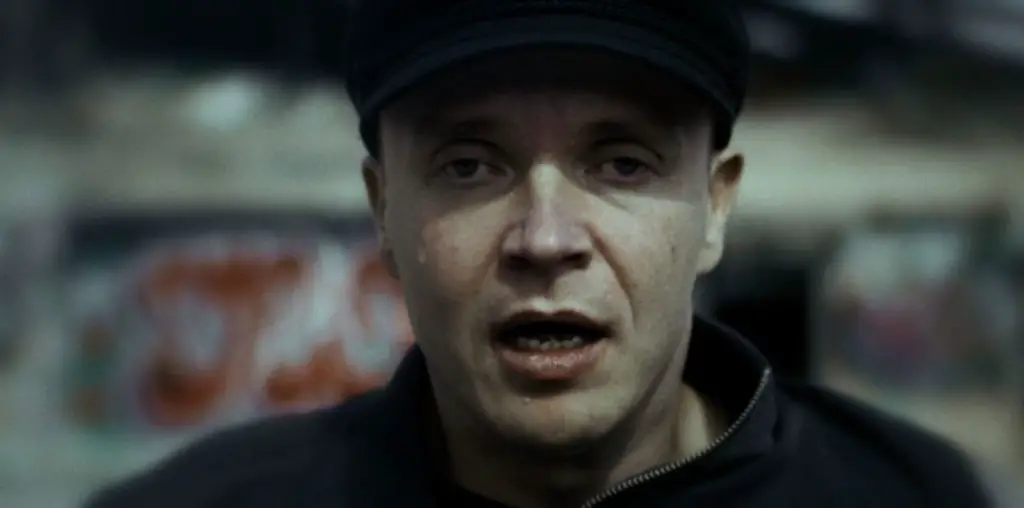
In “Mrs. Henderson Presents,” Bob Hoskins lets it all hang out. And while the tenacious Brit pit bull of cinema is no Dirk Diggler, he’s to be commended for having the cajones to, er, display his cajones. Hoskins plays Vivian Van Damm, a controlling 1930’s theater manager persuading his female dancers to bare all onstage. After all, he says, the French are doing it. But this is London, where inhibitions are considerably more rigid. And when Van Damm suggests that everyone at rehearsal strip down to make the performers feel more at ease, a temporary nudist colony materializes at the once-stuffy Windmill Theatre. Hoskins is a hoot, and so is the film.
There’s nudity in “Mrs. Henderson Presents,” but director Stephen Frears is no voyeur. The abovementioned scene, placed early in the film, seems a kind of, “Oh, let’s get all the teasing out of the way quickly” moment. It’s as if Frears is saying, “If you’ve come to see a movie about naked people, here it is – now, let’s move on.” He’s got more ambitious fish to fry, including electric ensemble acting, gorgeously choreographed recreations of English vaudeville, and a poignant character study.
We initially meet Laura Henderson as she attends the crowded funeral of her wealthy, revered husband. Well-spoken men in back top hats stop in her presence, offering condolences like, “He was an estimable man.” Following the somber service, Dench’s distraught widow boards a small, wooden rowboat and paddles into the center of a serene lake. This boating ritual, we eventually come to understand, is Henderson’s personal coping mechanism for handling emotional turmoil.
Bored and disinterested in the usual pastimes of widowhood (“I would rather drink ink,” she remarks of embroidery), this restless old dame impulsively plunks down money on a seen-better-days theater dubbed the Windmill. Henderson hires Van Damm (Hoskins, playing elegantly against-type) to whip the stagnant venue into vibrant shape, before staging an all-day musical revue.
Ultimately, stiff competition prompts Henderson to explore “new markets,” and throw nude performers into the mix. We learn that the woman’s daring, unconventional move isn’t motivated by business savvy or greed – it’s the result of spending too many years in a passive, repressed haze. “Yours is such a tiresome generation,” she spits at an affection-craving dancer. “Always looking for love, while we did quite well without it.”
And there’s another reason for Henderson’s audacity. Although she travels among affluent circles, the woman’s pampered life has weathered its share of loss. Frears’ camera observes her visiting the British War Cemetery of Northern France, where she grieves a fallen soldier son.
In fact, it’s this maternal bereavement that revs up the heart of “Mrs. Henderson Presents.” With the advent of another war, German bombs drop from the sky while theatre audiences divert their terror inside the Windmill’s upbeat, comfy sanctuary. And amidst the explosions outside, Henderson observes more young servicemen departing for the front lines. The well-informed woman understands all too well that many will never return. What better “mission” for the Windmill than to entertain these young fighting men with morale-boosting – and visually alluring – song and dance spectacle?
There are numerous subplots popping up throughout “Mrs. Henderson Presents,” including the melodramatic arc of one dancer’s doomed affair with an eager young soldier. It’s a quick injection of tragedy that doesn’t have much depth or resonance. Equally shallow is the barely-touched on suggestion that Van Damm’s Jewish relatives are at risk as Hitler puts his brutal Nazi machine into motion. All the same, Frears succeeds in capturing a unique ambiance and mood. The dancers employed by the Windmill (some of whom take up residence there when the bombings become particularly threatening) make up a convincing and sympathetic surrogate family.
As Mrs. Henderson, their outspoken mother hen, Judi Dench conveys the reckless, honest spontaneity of a female force of nature suddenly able to call her own shots. And the sincerity of Henderson’s heart makes this ferocious rooting interest all the more likable: Henderson isn’t really in it for the money, after all. Rather, she’s trying to provide a public service. Our acceptance of her motives makes the Windmill’s ample display of flesh seem more than sleazy exploitation.
Bob Hoskins, meanwhile, acts as a cautious counterbalance – his Van Damm is a pragmatic operator. Even so, he catches Henderson’s contagious desire to helm something fearless and unique. While auditioning girls, the persuasive manager tells them, “Isn’t great art, after all, the celebration of nature? That’s what this is.” Obviously, he’s rationalizing why they should get naked. But he also truly believes what he says.
“Mrs. Henderson Presents” tells the story of an older woman making up for lost time. Trading decades of muzzled vitality for a new lease on subversive spirit, Laura Henderson proves that it’s never too late to live a little.
